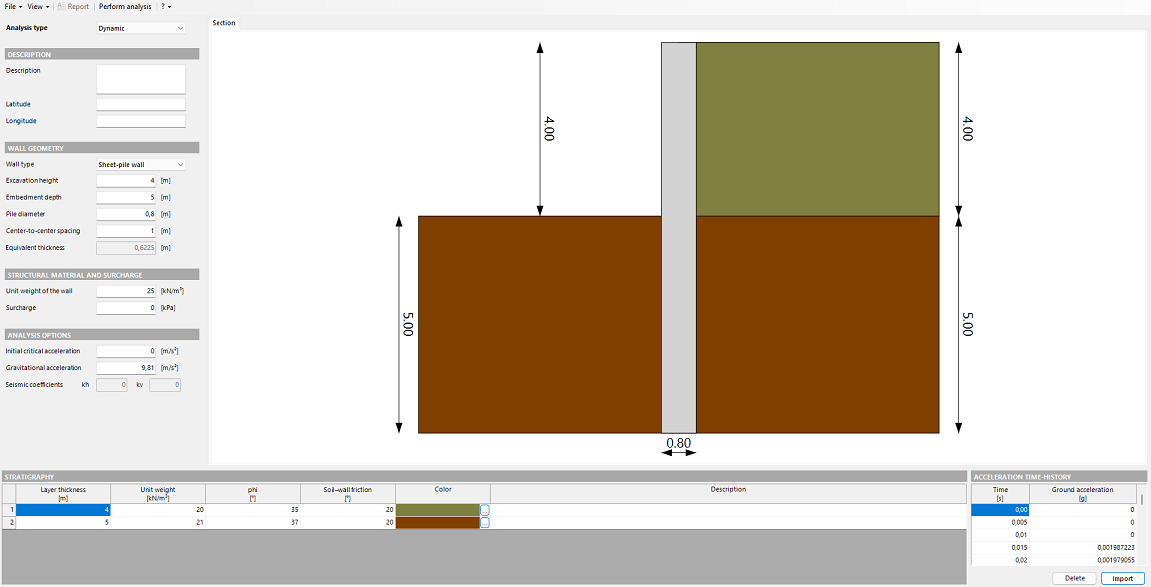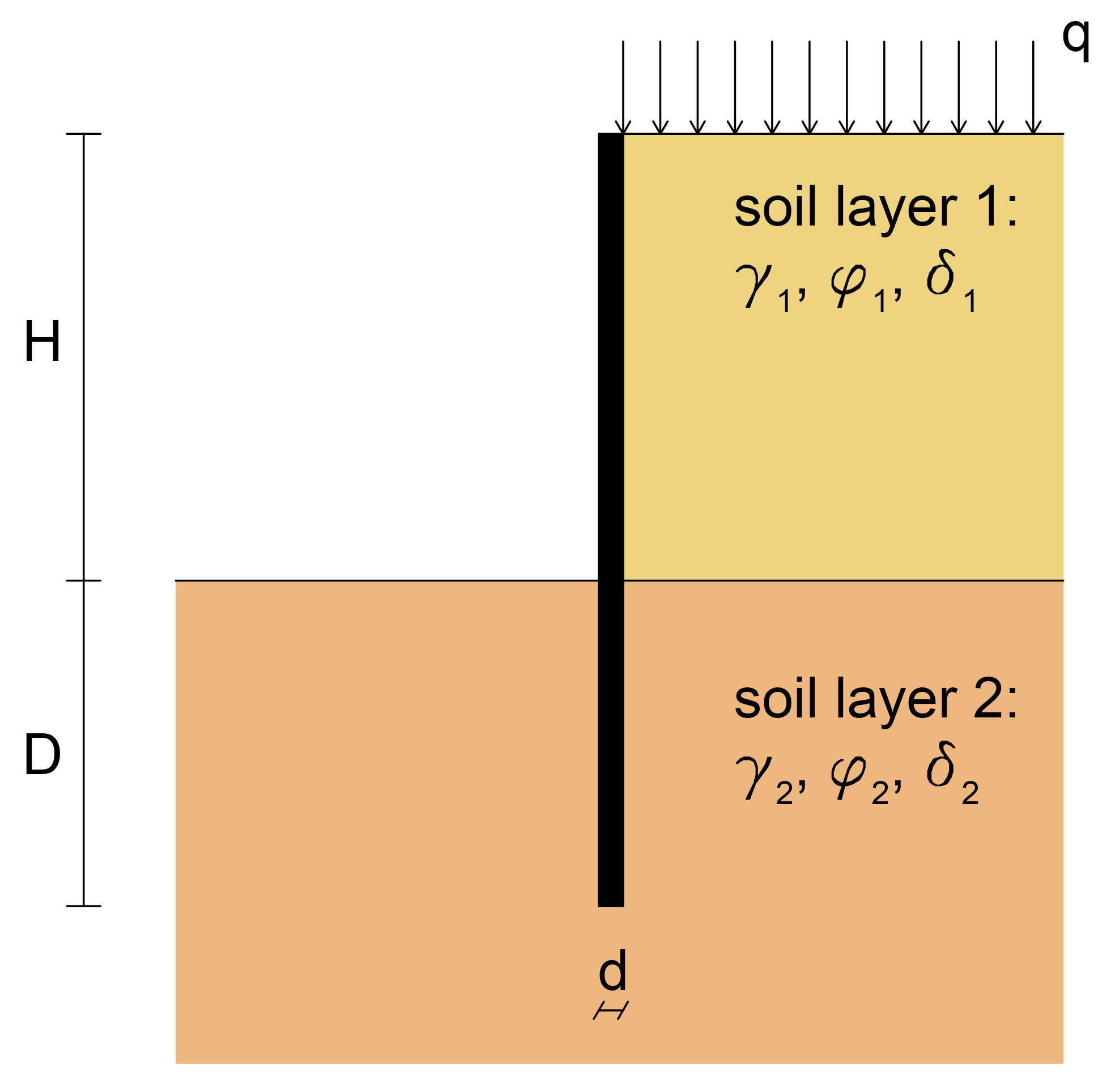Stability analysis of embedded cantilever retaining walls in seismic area is generally carried out by calculating a factor of safety against a possible mechanism of collapse. However, a more rational approach consists in assessing the performance of the structure in terms of accumulated permanent displacement. Indeed, this approach is required by many national standards as well as Eurocodes, such as in particular, Eurocode 7 Part 1 (§2.4.8, §9.8.2) and Eurocode 8 Part 5 (§7.1(1)P, §7.1(2)).
In this context, DReW Seismic allows predicting the earthquake-induced permanent displacements of embedded cantilever retaining walls, such as diaphragm or sheet-pile walls. DReW Seismic is developed on the basis of the method recently published by Conte, Pugliese and Troncone (2022), in the journal Géotechnique.

General overview of DReW Seismic
GENERAL FEATURES
DReW Seismic performs a dynamic analysis of embedded cantilever retaining walls in cohesionless soils, calculating the evolution with time of the permanent displacement of these structures owing to earthquakes. The dynamic analysis refers to the solution developed by Conte, Pugliese and Troncone (2022). The main features of the software are listed below:
•The redistribution of the soil pressure on the wall as a function of the wall displacement is accounted for, as required by Eurocode 7 Part 1 at §9.7.1(5)
•Different typology of structures: diaphragm and sheet-pile walls
•Layered soil
•Presence of surcharge
For the sake of completeness, a pseudostatic analysis can be performed as well. This latter refers to the procedure developed by Conte, Troncone and Vena (2017).
REQUIRED INPUT
DReW Seismic is very easy to be used and requires a limited number of input parameters (see the figure below). In particular, the following data is required:
•Excavation height, H
•Embedment depth, D
•Soil unit weights, γ1 and γ2
•Angle of shearing resistance of the involved soils, φ1 and φ2
•Friction angle at the soil-wall interfaces, δ1 and δ2
•Unit weight of the wall, γwall
•Wall thickness, B (in case of diaphragm wall)
•Pile diameter, d, and spacing between piles, s (in case of sheet-pile wall)
•Surcharge intensity, q
Moreover, since a dynamic analysis is performed, an acceleration time-history representative of the considered site is required. To this purpose, it is possible to refer to an acceleration time-history that has been previously recorded at the site. A database of earthquakes to refer to is available on this website.
If a pseudostatic analysis is performed, the horizontal and vertical seismic coefficients, respectively kh and kv, are required.

Sketch of the geometry considered in DReW Seismic
OUTPUT
DReW Seismic provides the outputs listed below when a dynamic analysis is performed:
•displacement time-history owing to a given earthquake. The displacement is calculated for the top of the wall
•comparison between the ground acceleration time-history and the corresponding critical threshold, which is also updated during the earthquake
•evolution with time of the angular acceleration of the wall
•evolution with time of the angular velocity of the wall
•evolution with time of the rotation of the wall
•evolution with time of the net pressure at the wall end and comparison of this latter with the corresponding limit value
•evolution with time of the depth "X", which define the portion of the soil in which the passive resistance is completely mobilized
•evolution with time of the center of rotation of the wall "Y"
•evolution with time and depth of the net pressure acting on the wall
When a pseudostatic analysis is performed, the following outcomes are provided:
•net pressure acting on the wall
•shear force
•bending moment